Orientals mainly use shovel hooks, and the hook part is a flat and slightly angled plate-like area. Westerners are accustomed to using eye hooks with hooks and eyes. The eye hooks can be used with a swivel knot. The following is an introduction to the tying method of flat hooks.
1. External knot
1. Fold the end of the line in half and place it on the hook as shown in the picture
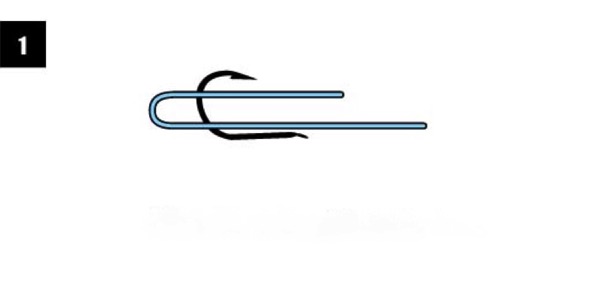
2. Wrap the wire end around the hook handle as shown in Figure 2 to form a coil

3. Twist the hook handle and the sub-wire together at the end of the wire as shown in Figure 3 for about 5-6 turns

4. The wire end is folded back and passed through the coil formed by folding and winding as shown in Figure 2

5. Adjust the sub-line and place it on the inside of the hook, and slowly tighten the line knot to cut off the excess part of the line end

2. Internal hanging knot
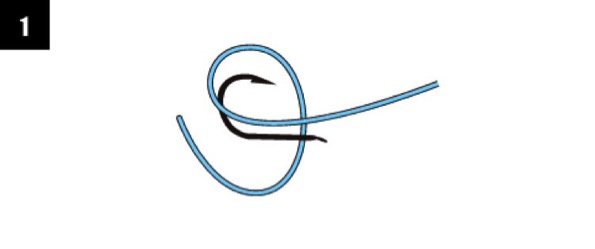
1. The wire end is wound around the hook handle to form a small coil
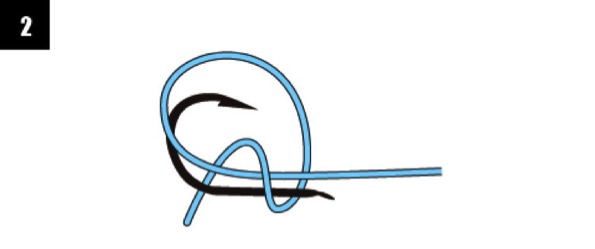
2. Twist the wire end to the hook handle and the coil
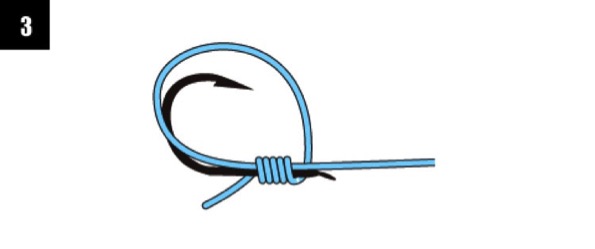
3. As shown in Figure 3, wrap around 7-8 turns
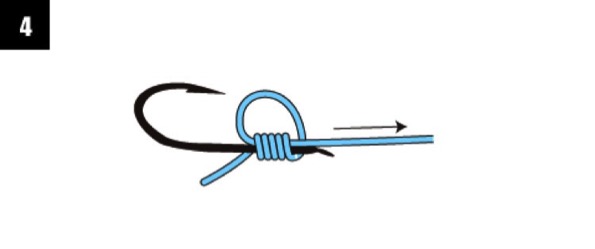
4. The adjustment sub-wire is placed on the inside of the hook handle and slowly tightened
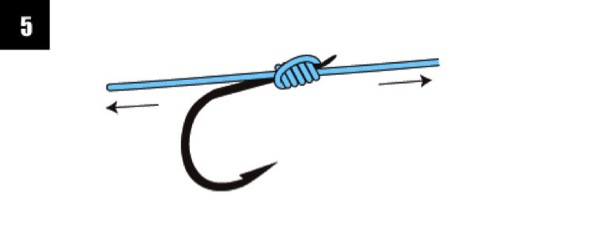
5. In the direction shown in Figure 5, tighten the knot
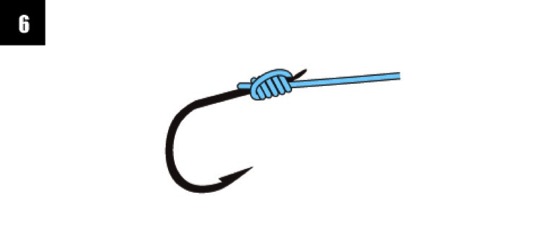
6. Cut off the excess part of the wire end (if the position of the sub-line is not correct, you need to adjust the sub-line to the inside of the hook handle again)
3. Deformation Outer Hanging Knot

1. Put the end of the line on the hook, and wrap a small coil around the handle hook

2. As shown in Figure 2, the wire end is wrapped around the hook handle and the sub-wire for 2 turns

3. The third circle is that the wire end is wrapped around the hook handle alone

4. The end of the wire is wound around the hook handle and the sub-wire for about 2-3 turns.
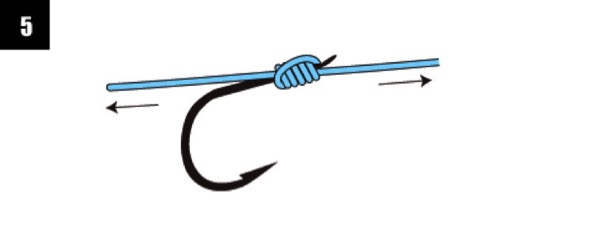
5. Slowly tighten the knot in the direction shown in the picture, and cut off the excess part of the wire end.
4. Hook binding method
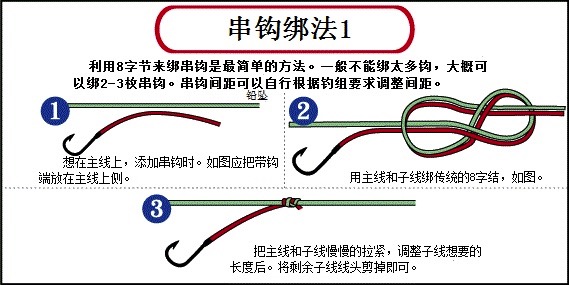
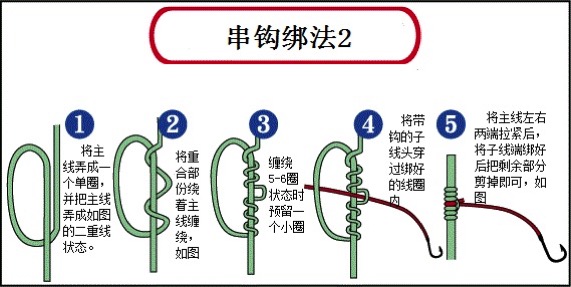
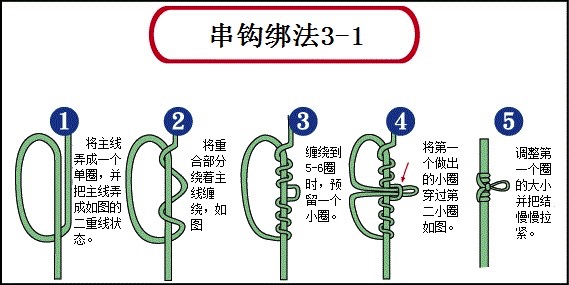
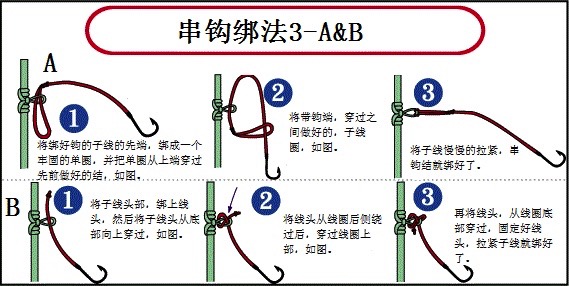
5.Matters needing attention
Pay attention to safety when tying the hook. The word "lubrication" often appears in the hook tying link. This is the last link of the tying hook. The knot can be wetted by saliva or water, which has a certain lubricating effect, making it easier to tighten the knot. . Especially in the lubricating link, be careful, don't let the fish miss the hook and hook yourself first.
When tying the hook knot, you should adjust the position of the knot and the spool as shown in the figure at the final loop. This greatly reduces the slippage or breakage of the line knot, and also reduces the chance of the big fish running off the hook.


